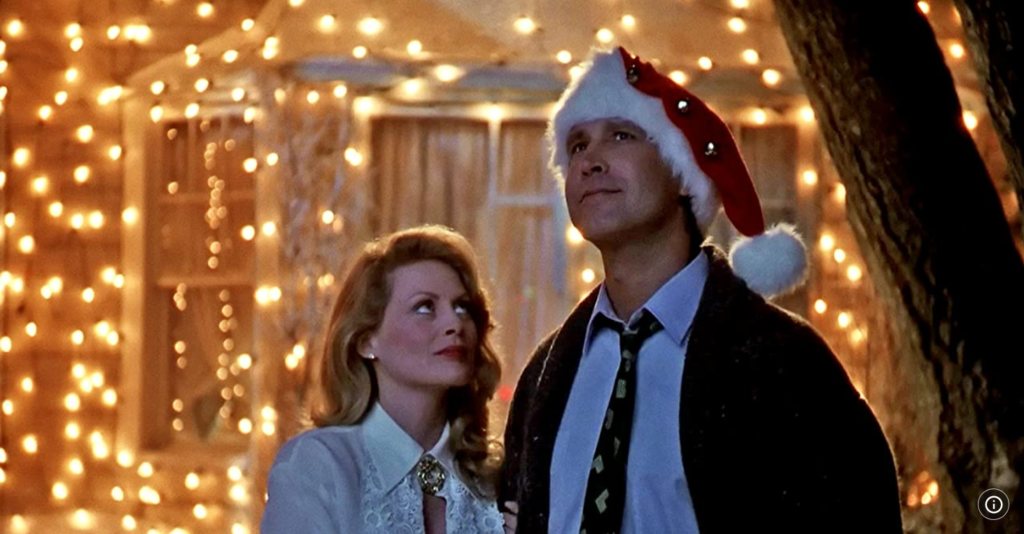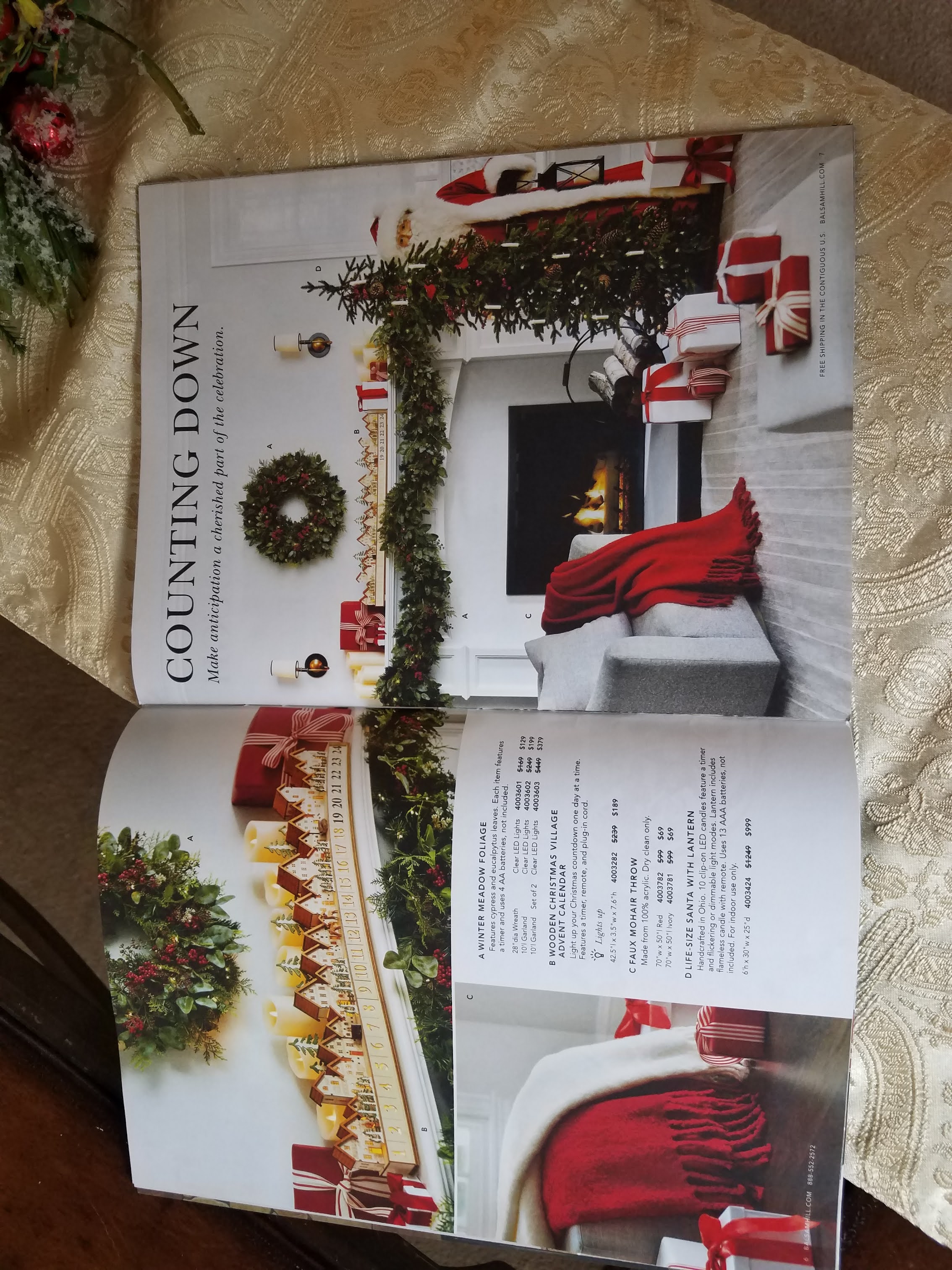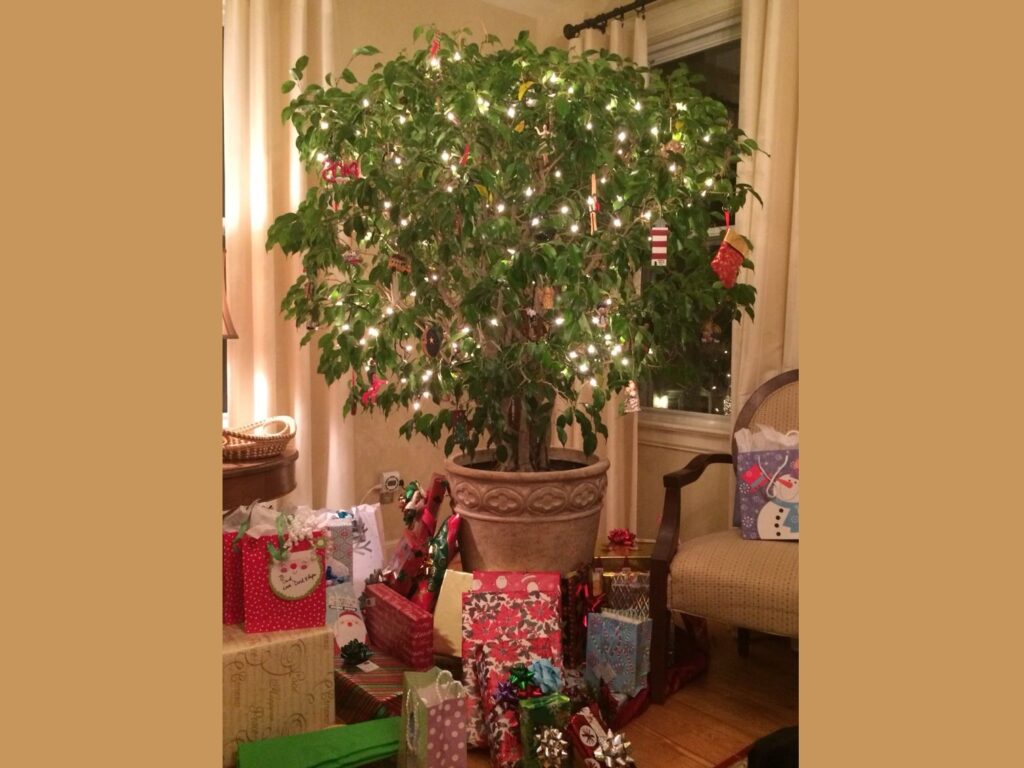Part 4 – Examining Motivations
Whenever I’m given a choice between two things – and only two things – my automatic reaction is to ask why those are my only two options and to look for a third. This response is most obvious during presidential election years when I refuse to accept that my voice only counts if I use it to support the lesser of two evils. For that reason, as much as I love my real Christmas tree, I didn’t want to finish out this series on real vs. fake trees without mentioning some unconventional “third-party” alternatives.
Less is More
Of course, if we’re talking environmental impact, less consumption is always better, as I often stress on this blog. That being said, I won’t deny that when looking through holiday advertisements, I feel a strong desire to decorate like Martha Stewart. I have no idea how I got on the mailing list for Balsam Hill (the company headed by Thomas Harman, who is also president of the American Christmas Tree Association),[1] but their catalog coincidentally arrived in the mail the week after I started this blog series.

Image credit: [2]
Paging through it, I can understand the drive to order boxes and boxes of beautiful decorations to make my house look festive. There is no argument from me that what they sell is gorgeous, or that I want my house to look like a Christmas wonderland, but I would also argue that it plays to our very American drive to consume, as well as to our hard-wired human need to fit in (if not keep up with the Joneses) and show we belong by purchasing and decorating accordingly. Effective marketing plays on fear as much as anything else,[3] and those fears could be as subtle as “my family won’t have a nice Christmas if I don’t make everything look perfect.” The fact is that our economic engine is not designed for people making responsible decisions by buying less or buying second-hand.
I’m not saying “don’t decorate for the holidays;” I am saying that we should all examine our priorities before diving into the holiday fray. Even my sustainability professor in grad school admitted striking a balance between the environmental impact of putting lights on his house at Christmas and the joy it brought his kids. (I will also take this opportunity to point out that purchasing locally grown real trees helps support the local economy.) If this year has taught me anything, it has been to focus on what brings me joy. I started out with my Marie Kondo challenge in the spring,[4] and that mentality stayed with me as I evaluated not just things in my house, but people and activities in my life,[5] and also thoughts in my mind.[6]
Before you buy your tree or any other holiday decorations, first ask yourself why. Is it because it will bring you joy, or is it because you feel you should (e.g. because you’re supposed to have a perfectly decorated house, or because your neighbors participate in an arms race of yard decorations, or because you’ve always done something a certain way)? Last year I wrote about the unrealistic (and largely self-imposed) expectations that many people (particularly women) experience during the holidays, in part because that’s how the women in my family have always approached Christmas.[7]

From Intention to Reality
It may sound like an odd suggestion, but it is a very healthy approach to take some time at the beginning of the season to identify how you want to feel during the holiday. Examine what would bring you joy, and make a commitment to achieving that. If you commit to creating a restful break to recharge from work, or taking time honor your spiritual connection to a holiday, or making your festivities as low-impact as possible (since the forecast for Christmas Day in Pittsburgh is 50 degrees), your holiday may look very different than what you see in a catalog – and that’s OK.
Once you have set that intention, examine what needs to happen to achieve it and then set more realistic expectations based on what will bring you joy vs. what will fulfill an external expectation. If you have family members who will be impacted by your decisions, have conversations with them and set those intentions together. (I’m aware that this course of action is far easier said than done. I know that making Christmas perfect for Christian matters a lot more to me than it does to Christian, but I still regularly knock myself out with my standard to-do list of cards, cookies, presents, decorations, and parties.)
If the commitments you make lead you away from more the conventional Christmas decorations (particularly a Christmas tree) for any reason, there are some options I came across that might be of interest to explore…
- If you just want more down-time and a low-key holiday…
Decorate what you’ve already got.
Friends of mine decorated their potted ficus tree last year while quarantining at home. It was still festive, and actually quite cute. Then they enjoyed a very relaxing Christmas morning together with their cat.

Image credit: [8]
- If you want more opportunities to create fun memories with your kids…
Make your own tree with repurposed materials.
You can get creative and make something together that kids can have fun with, rather than having a perfectly decorated tree that they’re not allowed to touch (as would be the case in my house if I had kids). For example, make.do has posted instructions for making a cardboard tree. While not my style, it still strikes me as a fun activity that guarantees quality time together. It’s also a nice, temporary way to deal with all of the cardboard delivery boxes that might be arriving at your house.[9] Greenpeace compiled a list of other possible DIY tree materials, including a ladder, books, and reclaimed branches.[10]
An important note if you’re repurposing old plastic Christmas decorations, particularly PVC: remember to use caution – kids and pregnant women should avoid them, and you should always wash your hands after touching them.[11]

Image credit: [12]
- If you want to want to reduce your impact but still can’t bear the thought of Christmas without a real tree…
- Decorate one in your yard so it can keep growing for years. I used to string lights on ours as the subtlest offering of holiday decorations in our neighborhood, but its growth has outpaced the height of our ladder.
- Rent a potted Christmas tree each year. There don’t appear to be any options in Pennsylvania, but it is a novel concept. It’s also important to remember that this option may not be an environmentally friendly one if the carbon footprint of transporting it to and from your house outstrips the amount of CO2 the tree can absorb.
- Get a permit to cut your own. One of my friends gets a $15 permit every year to cut a tree in a national forest.[13] She and her family make a day of it to hike through the woods and pull the tree out themselves on a sled. While some activist organizations, such as Greenpeace, discourage this option because of the risk to wildlife living in the tree, advocacy organizations, such as The Nature Conservancy, hail it as one of the best options because it promotes sustainable forest management.[14]

Image credit: [15]
No matter how you choose to decorate, I hope this series has given you some perspective on your options – including how much you really want to do. I’d love to hear below what you decided for your own home.
And no matter what (or if) you celebrate, I wish you a very happy and healthy holiday.
Thank you, as always, for reading!
[1] https://www.balsamhill.com/
[2] https://www.imdb.com/title/tt0097958/mediaviewer/rm1097192193/
[3] https://www.apa.org/news/press/releases/2015/10/fear-based-appeals
[4] https://radicalmoderate.online/tidying-up-week-1/
[5] https://radicalmoderate.online/414-days-of-solitude/
[6] https://radicalmoderate.online/sharpening-the-saw-part-2/
[7] https://radicalmoderate.online/hindsight-is-2020-part-1/
[8] https://www.pinterest.com/pin/472103973417603729/
[9] https://www.make.do/blogs/makedo-makers/54124673-how-to-make-a-cardboard-christmas-tree
[10] https://www.greenpeace.org/canada/en/story/45179/cant-decide-on-a-real-vs-fake-christmas-tree-try-one-of-these-eco-friendly-options/
[11] https://www.greenchildmagazine.com/6-tips-for-safe-holiday-decorating/
[12] https://www.boredpanda.com/diy-christmas-trees/
[13] https://www.recreation.gov/tree-permits
[14] https://www.nature.org/en-us/what-we-do/our-priorities/protect-water-and-land/land-and-water-stories/real-vs-fake-christmas-tree/
[15] https://www.pinterest.com/pin/497084877601190410/
0 Comments